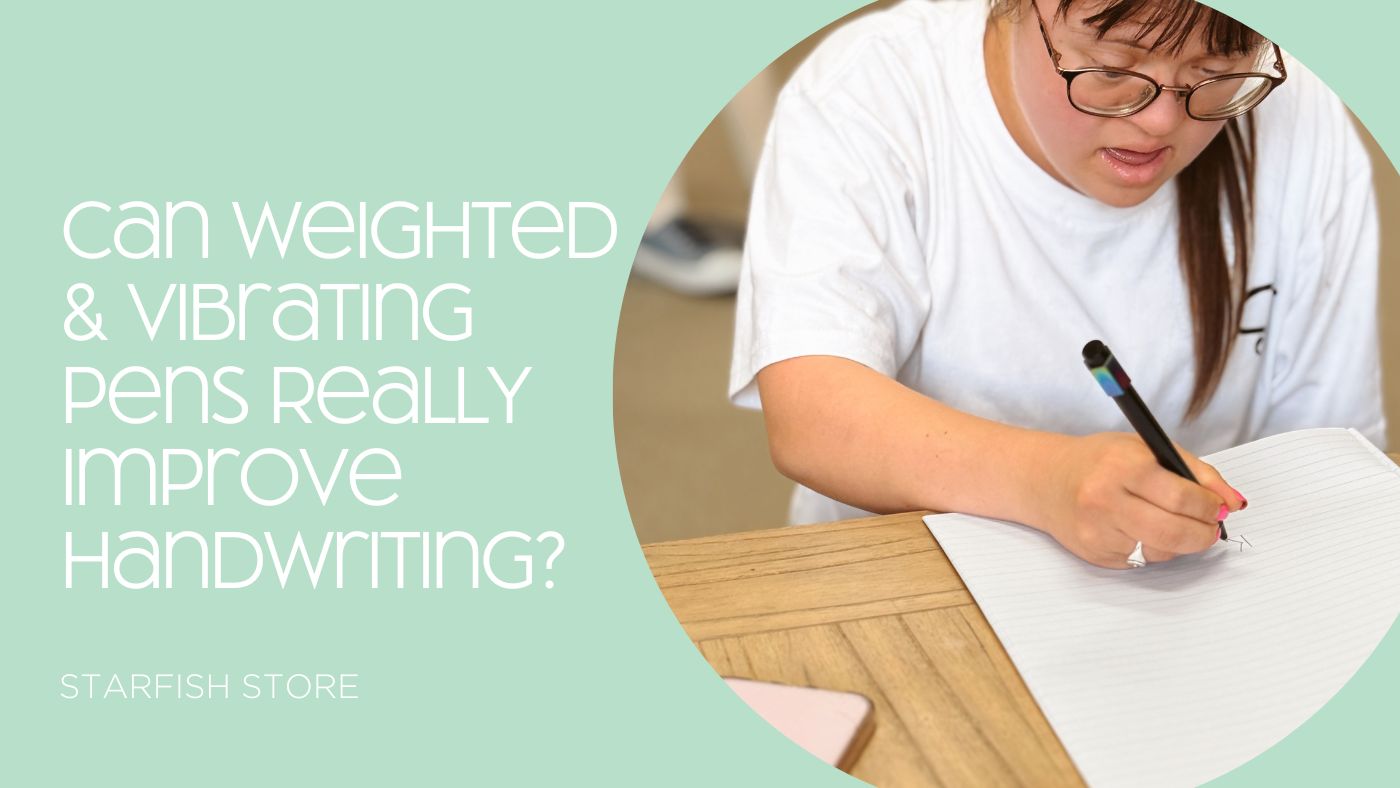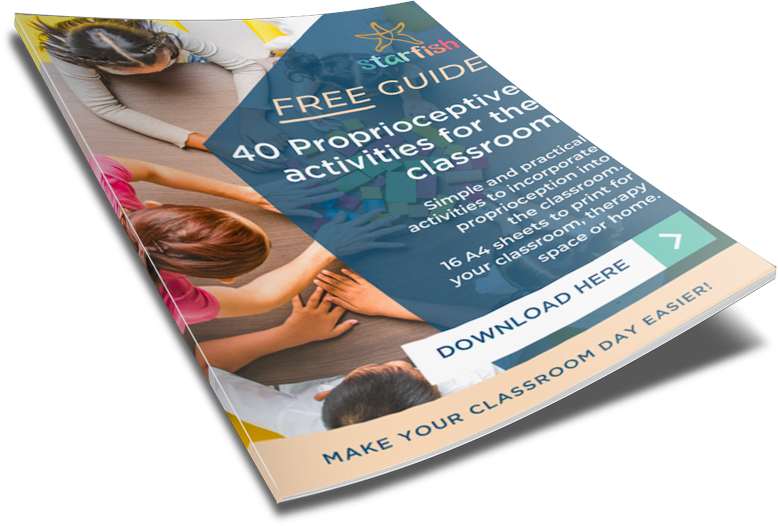Your Cart is Empty
A brilliant Starfish surprise! New Weighted Lap Pads in calming Ocean & Sand now available.
A brilliant Starfish surprise! New Weighted Lap Pads in calming Ocean & Sand now available.

If you're a parent or teacher supporting a child with messy handwriting, poor letter formation, or issues like writing too softly or pressing too hard, you may have tried everything from pencil grips to handwriting worksheets. But have you ever considered using a weighted or vibrating pen or pencil?
At first, it might seem counterintuitive. After all, why would adding weight or vibration make writing easier? But for many children and adults — especially those with poor fine motor coordination, low muscle tone, sensory processing differences, or developmental delays, these specialised tools can make a big difference.
Indeed, several of the students in our specialist tutoring centre find a weighted pen makes a noticeable difference.

Weighted pens and pencils are designed to provide proprioceptive input.
Proprioceptive input is feedback to the body about where it is in space. In this case, additional weight or vibration, provides input to the receptors in the muscles and joints of the hand. This extra input can help a child become more aware of where their hand is and how they’re moving their hand and fingers. The added weight also encourages slower, more controlled movements, which can lead to neater handwriting.
Children who write with light, almost invisible marks often lack the hand strength or body awareness needed to control a standard pencil. Likewise, those who press too hard, breaking pencil tips or tearing paper, often benefit from the regulated feedback that a weighted tool can provide.
Another advantage of having a weight on (the end) of a pen or pencil is that it encourages the pen to sit or fall back into the web of the hand.
Vibrating pens and pencils provide gentle sensory stimulation, which helps increase focus and fine motor control. For children with sensory-seeking behaviours or attention difficulties (like ADHD), the vibration can act as a calming input that helps them tune in to the task at hand.
Some find that the vibration improves their grip strength or writing fluency, especially during longer writing tasks.
At Starfish Store, we offer a range of tools that can support handwriting development, including:
The Starfish Weighted Pen provides balanced support to help steady handwriting and improve control. Designed for comfort and confidence, it adds gentle weight that enhances feedback to the hand — ideal for those with tremors, Parkinson’s, or reduced dexterity. Classy, comfortable, and discreet, it’s a simple way to make writing smoother.
DIY Weighted Pencil or Pen – it is easy to add weight to a pen or pencil. Simply place a rubber band half way down the shaft then slip on 2 or 3 nuts then pop another rubber band above (the rubber bands keep the nuts in place). The nuts used in the video below are 12mm and weigh approximately 14g. As a rough guide aim for 50g up to 100g in total. Using a home made weighted pen will give you the opportunity to see if a weight will help before purchasing a weighted pen.
The ARK Z VIBE Vibrating Pen and pencil offers gentle vibration to awaken muscles and increase sensory feedback during handwriting tasks. It can help improve focus, coordination, and fine-motor strength for children or adults who benefit from extra sensory input. With interchangeable pen and pencil tips, it’s a versatile therapy tool trusted by OTs for developing better hand awareness and control.
The Kaiko Weighted Fidget Spinner Pen blends writing and fidgeting into one clever tool. The added weight provides steady proprioceptive input for smoother handwriting, while the discreet spinning feature supports focus and calm. Sleek, durable, and ideal for school, home, or the office — it’s a practical choice for those who need movement to maintain attention and regulation.
While no single tool is a magic fix, weighted and vibrating writing tools are an excellent addition to a handwriting support toolkit. They work by improving body awareness, motor control, and focus— and can lead to more consistent and legible writing.
If you're not sure where to start, chat with an occupational therapist or chat to our team online. We’re always happy to help you find the right tools for your learner.
Explore our handwriting tools here: https://starfishstore.com.au
Need advice? Contact our friendly team—we’re here to help!
Kirstie Wishart M.Ed (Special Education).
Owner and founder of The Starfish Store. Kirstie’s professional life has included: teaching (in both public and private schools in Australia, New Zealand and Thailand), lecturer and subject coordinator at the University of Wollongong, Educational consultant (working with children and young people with a trauma background), OoHC Case Work Manager, and Specialist Tutor (working with children and young people with significant learning difficulties and/or disabilities).

40 Proprioceptive activities for the classroom. Simple and practical activities to incorporate Proprioceptive into the classroom. 16 A4 sheets to print for your classroom, therapy space or home.